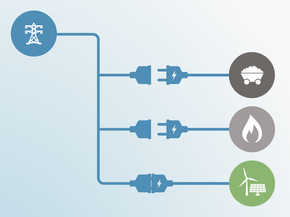Net zero targets
Summary
We evaluate the net zero target as: Acceptable.
Switzerland committed to a net zero target as part of its long-term strategy submitted to the UNFCCC in January 2021.
With the new Climate Protection Act (Bundesgesetz Über Die Ziele Im Klimaschutz, Die Innovation Und Die Stärkung Der Energiesicherheit (KlG), 2023) which passed in June 2023, Switzerland became the first country to enshrine its net zero target in law through a public referendum. The same law introduced binding interim and sectoral targets, and requires the parliament to develop periodic roadmaps for achieving the target. It also now covers emissions from fuels for international aviation and shipping that are refuelled in Switzerland. Based on these positive improvements across several key elements, the CAT now evaluates the scope, architecture, and transparency of Switzerland’s net-zero target as ‘Acceptable’.
Switzerland’s target covers all sectors and gases underpinned by emissions pathway analysis and the communication of clear strategic goals and emissions targets per sector. The proposed measures aim to achieve net zero on Switzerland’s own territory, but it reserves the right to use international offset credits, even if only for technically unavoidable domestic emissions.
CAT analysis of net zero target
Ten key elements
Scope
- Target year – Switzerland aims to reach net zero by 2050.
- Emissions coverage – The target covers all GHG emissions (i.e., the 7 Kyoto gases: CO2, CH4, N2O, HFCs, PFCs, SF6, NF3) and all sectors of the economy (excluding international bunkers).
- International aviation and shipping – The target includes fuels for international aviation and shipping that are refuelled in Switzerland.
- Reductions or removals outside of own borders – Switzerland reserves the right to use international offset credits to meet its net zero target
Target architecture
- Legal status – The Swiss Federal Council adopted the net zero target in its Long-Term Climate Strategy for Switzerland (Swiss Federal Council, 2021) and enshrined it into law in June 2023 when the Climate Protection Act passed a public referendum.
- Separate reduction & removal targets – Switzerland specifies separate emission reduction and removal targets. In its LTS, Switzerland outlines indicative targets for emissions removal needs per sector for 2050.
- Review process – The Climate Protection Act mandates the Federal Council to submit timely proposals to the Federal Assembly for the implementation of the objectives of the net zero target in at least three predefined review cycles (2025-2030; 2031-2040; 2041-2050).
Transparency
- Carbon dioxide removal – Switzerland transparently outlines its assumptions for carbon dioxide removals to achieve its net zero target, but does not clarify whether it intends to rely on LULUCF sinks.
- Comprehensive planning – Switzerland provides strategic goals and emissions targets per individual sectors and comprehensively outlines the respective challenges. For example, Switzerland pursues the objective of having a net zero buildings sector by 2050, 90% emissions reduction below 1990 levels in the industry sector by 2050, and land transport that does not generate emissions in 2050 with few exceptions. In doing so, Switzerland elicits some actionable medium-term measures to reach net zero in the long term but only with limited detail.
In the Climate Protection Act of 2023, Switzerland now also has legally binding interim (2040) and sectoral (industry, transport, buildings) targets.
- Clarity on fairness of target – Switzerland makes no reference to fairness or equity in the context of its net zero target. It does not address the gap between its net zero target considered realistic domestically and what would be a fair target.
For further information on the targets Switzerland has adopted, see the targets tab here.
Good practice
The Climate Action Tracker has defined the following good practice for all ten key elements of net zero targets. Countries can refer to this good practice to design or enhance their net zero targets.
Further analysis
Latest publications
Stay informed
Subscribe to our newsletter







